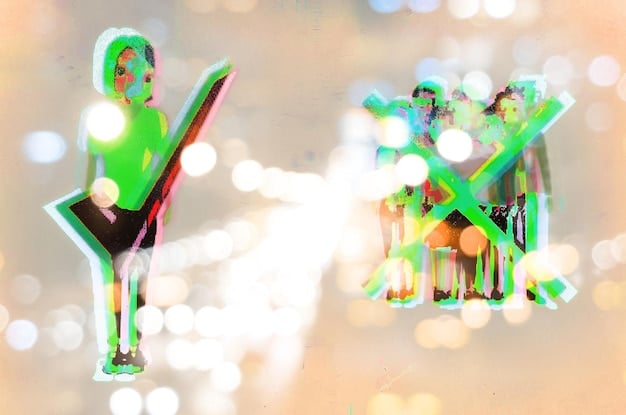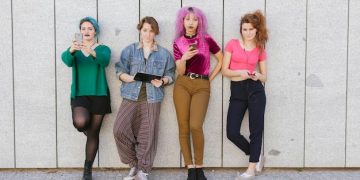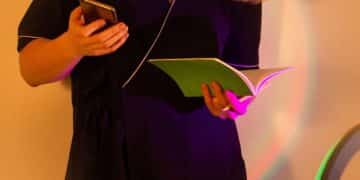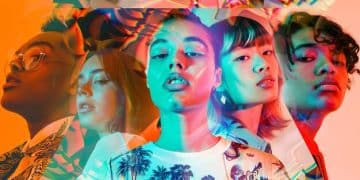Navigating K-Pop Copyright: A 2025 Guide for US Fan Creators

Navigating K-Pop Copyright Laws in 2025 is crucial for US-based fan content creators, requiring understanding of music rights, visual content usage, and emerging AI implications to avoid infringement and engage ethically within the K-Pop ecosystem.
Creating fan content around K-Pop is a global phenomenon, but it’s essential to understand the legal landscape. This guide, **navigating K-Pop Copyright Laws: A Guide for US-Based Fan Content Creators in 2025**, is designed to help US-based fans create content responsibly and legally.
Understanding Copyright Basics for K-Pop Content
Copyright law protects the rights of creators, preventing unauthorized use of their work. For K-Pop, this includes music, lyrics, choreography, and even the visual aesthetics of music videos and performances.
What is Copyright?
Copyright grants exclusive rights to the creator, including the right to reproduce, distribute, and create derivative works. Understanding these rights is the first step in respecting them.
Key Elements Protected in K-Pop:
- Music and Lyrics: Both are protected, meaning you can’t use them without permission.
- Choreography: Dance moves are also subject to copyright, limiting how you can share or recreate them.
- Visual Content: Music videos, photos, and performance footage are all protected by copyright.
Ignorance of copyright law is not a defense. Even if you are a fan, using copyrighted material without permission can lead to legal issues. You must be aware of the law.

In summary, copyright law is a complex but essential framework for protecting creative content. Understanding the basics is crucial for anyone creating fan content. Now, let’s delve into how these rules apply in practice, particularly within the K-Pop community.
Fair Use and K-Pop Fan Content Creation
Fair use allows limited use of copyrighted material without permission. However, it’s a fact-specific analysis, and the outcome isn’t always predictable.
The Four Factors of Fair Use:
US courts consider these four factors when determining whether a use is fair:
- Purpose and Character of the Use: Is it for non-profit, educational, or transformative purposes? Transformative use means adding new expression or meaning.
- Nature of the Copyrighted Work: Is the original work factual or creative? Using factual works is more likely to be considered fair use.
- Amount and Substantiality of the Portion Used: How much of the original work did you use? Using a smaller portion is favored.
- Effect of the Use on the Market: Does your use harm the potential market for the original work? If it does, it’s less likely to be fair use.
Applying Fair Use to K-Pop Fan Content:
Creating a reaction video, a remix, or a fanvid doesn’t automatically qualify as fair use. You need to consider each factor carefully.
Fair use is not a loophole or a free pass. Each case is evaluated individually, and the burden of proof is on the user claiming fair use.
In conclusion, understand the fair use limitations. While it offers some leeway, it’s not a guaranteed shield against copyright infringement claims. Therefore, seek permission whenever feasible, ensuring you respect the rights of K-Pop creators while engaging with their art.
Obtaining Licenses and Permissions for K-Pop Media
When fair use doesn’t apply, you need permission to use copyrighted material. This usually involves obtaining a license from the copyright holder.
Contacting Copyright Holders:
The first step is identifying and contacting the copyright holder, which could be the record label, publisher, or individual artists.
Understanding Different Types of Licenses:
There are various types of licenses, each with varying terms and costs:
- Synchronization License: Needed for using music in audiovisual works like fanvids.
- Mechanical License: Required for reproducing and distributing copies of a song.
- Public Performance License: Necessary for playing music publicly, such as in a live stream.
Negotiating licenses can be complex. Be clear about how you intend to use the material and what rights you need.
Licensing provides a clear, legal pathway to use K-Pop content in your fan creations. Despite the complexities, it ensures that artists are respected and compensated for their work.

Navigating DMCA Takedowns and Copyright Strikes
The Digital Millennium Copyright Act (DMCA) provides a framework for copyright holders to request the removal of infringing content online.
Understanding DMCA Takedown Notices:
If you receive a DMCA takedown notice, it means a copyright holder believes you’ve infringed on their rights. Ignoring it can have serious consequences.
Responding to Takedown Notices:
You have two main options:
- Remove the Content: This is the quickest way to resolve the issue and avoid further action.
- File a Counter-Notice: If you believe the takedown was erroneous, you can file a counter-notice, which puts the copyright holder on notice that you dispute the claim.
Copyright strikes can lead to account suspension or termination on platforms like YouTube and Twitch. Avoid accumulating strikes by respecting copyright laws and responding promptly to notices.
The DMCA takedown process can be daunting, but understanding your rights and responsibilities is essential for protecting yourself as a content creator. Timely action and adherence to the rules are key to navigating these challenges effectively.
Fan Content and the Rise of AI in K-Pop
Artificial intelligence (AI) is transforming the K-Pop landscape, creating new opportunities and challenges for copyright.
AI-Generated K-Pop Content:
AI can be used to create new music, lyrics, and even virtual K-Pop artists. This raises questions about who owns the copyright to AI-generated works.
Copyright Issues with AI Training:
Many AI models are trained on vast datasets of copyrighted material. This raises concerns about whether the training process itself infringes on copyright.
AI is rapidly changing the rules of the game. As the technology evolves, so too will the legal landscape surrounding it. It’s essential to stay informed and adapt your practices accordingly.
In short, the integration of AI into K-Pop brings both exciting possibilities and complex copyright considerations. Staying informed and proactive is key to navigating this evolving landscape responsibly.
Best Practices for US-Based K-Pop Fan Content Creators in 2025
Staying on the right side of copyright law requires a proactive approach and a commitment to ethical content creation.
Documenting Permissions:
Keep records of all licenses and permissions you’ve obtained. This documentation can be invaluable if you receive a DMCA takedown notice or face a copyright claim.
Seeking Legal Advice:
If you’re unsure about the legality of your content, consult with an attorney specializing in copyright law. They can provide tailored advice based on your specific situation.
By implementing these best practices, you can demonstrate your commitment to respecting copyright laws and foster a positive relationship with the K-Pop community.
| Key Aspect | Brief Description |
|---|---|
| 🎵 Copyright Basics | Understanding what is protected and who owns the rights. |
| ⚖️ Fair Use | Knowing the four factors and when you can use content without permission. |
| 📝 Licensing | Process of securing legal rights; knowing where and how to obtain permission. |
| 🤖 AI | Navigating the novel challenges of copyright and AI-generated content. |
Frequently Asked Questions (FAQ)
▼
Potentially, but it depends on the context. If its transformative and doesn’t harm the market for the original song, it may qualify. But it’s a case-by-case evaluation.
▼
First, evaluate the notice carefully. You can either remove the content promptly or file a counter-notice if you believe the claim is inaccurate.
▼
Yes, you typically need a mechanical license to reproduce the song and a synchronization license if you create a video. Consider using platforms like DistroKid for licensing.
▼
Generally no, as this would infringe on the group’s trademark. Unless you have explicit permission, creating and selling such merchandise is illegal.
▼
AI raises novel questions regarding ownership and infringement. If you use AI, be sure you train models on licensed content and respect existing copyright laws.
Conclusion
Navigating K-Pop copyright laws as a US-based fan content creator in 2025 requires diligence, respect, and a willingness to adapt to the evolving legal landscape. By understanding the basics of copyright, fair use, licensing, and the implications of AI, you can create engaging content while respecting the rights of K-Pop artists and creators.





